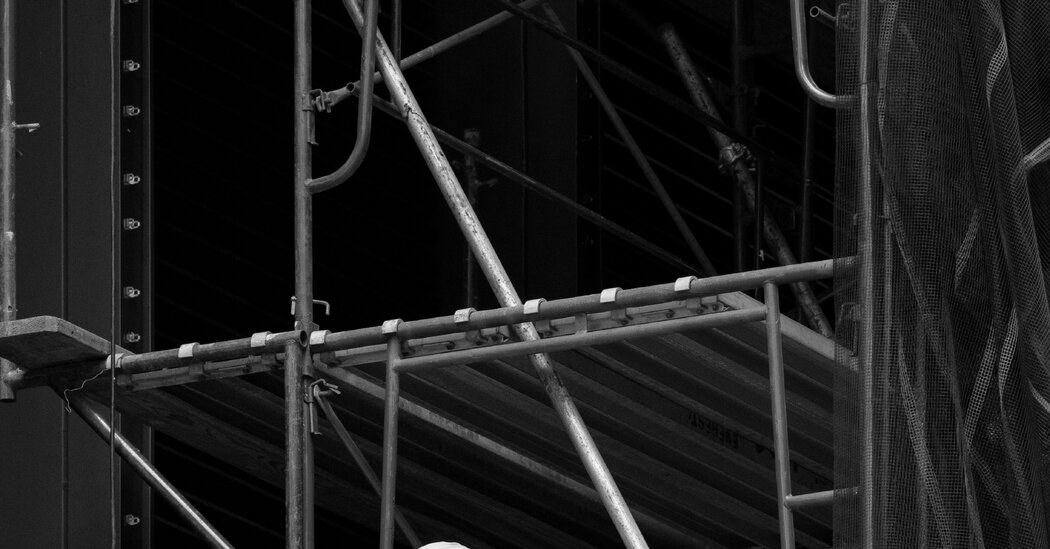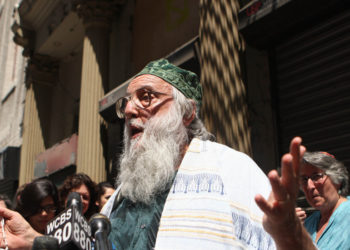Along with casting ballots for mayor and other officials, New Yorkers have begun voting on six ballot proposals. No. 1 would formally authorize a sports complex that was built in the Adirondacks. No. 5 would digitize and consolidate the city’s official maps. No. 6 would move New York City elections to years when there is a presidential race.
Nos. 2, 3 and 4 would amend the City Charter to streamline approval of affordable housing. Times Opinion asked Marc Jahr, a consultant and former president of the New York City Housing Development Corporation, to walk us through the case for the charter amendments, and Layla Law-Gisiko, president of the City Club of New York, a civic organization, who is running in 2026 for a New York State Assembly seat, to make the case against them.
Knock Down the Roadblocks to Affordable Housing
By Marc Jahr
New York City is facing its worst housing crisis in recent history. According to a 2023 survey, only 1.4 percent of apartments are available to rent and less than 1 percent of all rental apartments go for less than $1,650 per month.
Young families leave the city to find an affordable home. Over 80,000 New Yorkers sleep in shelters each night. Young and not so young adults live with two or three roommates, or back in their childhood bedroom.
Thankfully, New York voters have an opportunity to help create more affordable housing faster by approving Proposals 2, 3 and 4 to eliminate obstacles that have delayed affordable development for years.
The reforms would ensure that communities continue to have a say in decisions over density, rezoning, the sale of city-owned land and other land use, while accelerating the process for approving construction, reducing the barriers to development and requiring every community to accept its share of affordable housing.
Proposal 2 would speed up development by fast-tracking city-sponsored affordable housing and expedite it in the 12 community districts that produce the least. Proposal 3 would complement this change by accelerating approvals for smaller housing and environmental-resilience projects.Along with Proposal 2, Proposal 4 would provide an important check on City Council resistance to development by creating an appeals board to review council decisions on affordable housing.
Many neighborhoods, often those dominated by single-family homes, have used their political power to keep out denser housing. In the past decade, over 45 times more affordable apartments were built in the 10 most supportive City Council districts than in the 10 least welcoming districts, the New York Housing Conference has calculated.
A major driver of these problems is the city’s Uniform Land Use Procedure. Originally enacted to ensure that residents had a strong voice in decisions about construction in their communities, it has become an obstacle to any type of new housing. Approvals for zoning changes allowing construction to start take almost three years on average, with special interests opposing them at every turn.
The reforms put a check on “member deference,” the unwritten right of City Council members to kill any project they don’t want in their district. Member deference means the whole council is compelled to defer to the wishes of individual members at the expense of what the city desperately needs.
New Yorkers can help fix this system by voting yes on Propositions 2, 3 and 4, contributing to a stronger and more stable New York.
New York Needs Affordable Homes, Not a Power Grab
By Layla Law-Gisiko
New York absolutely needs more homes that low- and middle-income New Yorkers can afford. Proposals 2, 3 and 4 will make that less likely. They do not fund or even mandate deeply affordable units, nor do anything to repair public housing or preserve at-risk rent-regulated homes. By overstimulating development, they could give landlords an incentive to tear down apartment buildings without guaranteeing replacement housing at comparable rents.
The ballot proposals do not add a single dollar of subsidy or a single voucher. Instead, they mostly rearrange who gets to say yes to projects. They place most of the power in the hands of the mayor and his appointees, while sidelining the City Council, weakening checks and balances that protect neighborhoods and tenants.
Proposal 2 shifts key housing approvals to mayor-controlled boards. Proposal 3 lets one of those boards approve buildings about 30 percent larger than current zoning permits — which the proposal calls a “modest” increase — with no City Council vote. Proposal 4 creates a three-person panel made up of the mayor, the council speaker and a borough president that can overturn the council’s decisions.
But roughly 80 percent of the city’s new housing between 2010 and 2018 was been built “as of right” — that is, without the need for any zoning change, because it already complied with existing zoning. In other words, the city’s Uniform Land-Use Review Procedure and the City Council, the boogeymen of the proposals’ supporters, are not the main bottleneck for housing.
For the 20 percent of projects that do require discretionary action, public accountability matters. The City Council has achieved deeper rent affordability, tenant protections and open-space investments in the kind of practical negotiation that leads to sensible growth. Proposals 2 and 3 sideline that leverage, and Proposal 4 second-guesses it after the fact. They will make the yearslong predevelopment process only marginally faster. They concentrate power and tilt permitting behind closed doors and toward insider access rather than public deliberation.
Supporters of these initiatives argue that these measures will force construction in places that have delivered the least affordable housing. But focusing on the 12 community districts where the least affordable housing is built, as the initiatives propose, ignores how dense a district already is and can create perverse incentives.
Elected officials may bless questionable projects simply to get off the list. Developers may have free rein to go after rent-regulated buildings, emptying them out as teardowns for development opportunities in the name of meeting a production target.
No one could say that the current oversight process is a breeze. Perhaps the best argument for it is what opponents see as the problem: the friction of checks and balances, of developers’ bottom lines and public policy goals. That ensures that the concerns of residents, businesses and industries are considered.
Markets are indifferent to equity and public good. New York should deploy the tools the market won’t: targeted subsidies for deep affordability; transparent, enforceable community-benefit agreements negotiated in public, and a credible, publicly funded capital program for the city Housing Authority.
Voters should reject Proposals 2, 3 and 4 because they vest power in the mayor, concentrate decisions among a few positions whose holders are often backed by real-estate funding, and silence the public. That is not democracy.
Mark Jahr is a consultant and former president of the New York City Housing Development Corporation. Layla Law-Gisiko is the president of the City Club.
The Times is committed to publishing a diversity of letters to the editor. We’d like to hear what you think about this or any of our articles. Here are some tips. And here’s our email: [email protected].
Follow the New York Times Opinion section on Facebook, Instagram, TikTok, Bluesky, WhatsApp and Threads.
Ms. Law-Gisiko is the president of the City Club.
The post Will New York Voters Choose to Speed Up Housing Construction? appeared first on New York Times.




